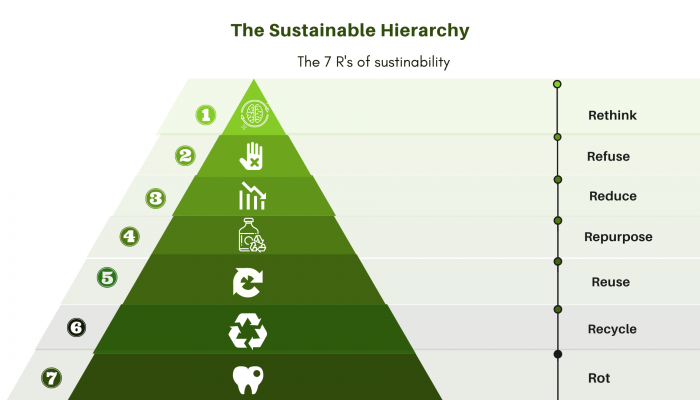Consumers increasingly don’t want to accept the guilt of packaging waste. Packaging is frequently scrutinised and choosing the right eco-friendly solution can serve to increase the perceived value of your products!
However, it can be difficult to know which steps to take to make your business eco-friendly, not everything can be recycled or composted and time and cost restraints are another issue.
That’s why we refer to the sustainable hierarchy based on ‘the 7 R’s of sustainability’ when consulting and planning with our clients for eco-friendly packaging solutions.
We aim to deliver a variety of eco-friendly recyclable, reusable, recycled and compostable packaging solutions. You can discover our wide range of sustainable packaging options here


